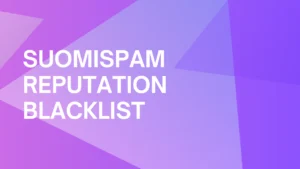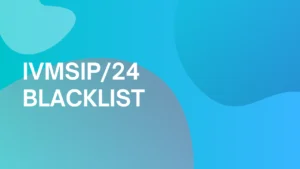
Backscatterer Blacklist: What Is It and How To Remove Yourself From It?
The Backscatterer Blacklist is designed to flag email servers that generate incorrect bounce messages, often due to spam filtering issues. If your IP lands on this blacklist, your email deliverability may suffer. In this article, you’ll learn:
- Best practices for avoiding backscatter and maintaining clean email practices to stay off the list
- What causes backscatter and why your server might be listed
- How to check if you’re on the Backscatterer Blacklist and how removal works
What Is The Backscatterer Blacklist?
The Backscatterer Blacklist shows users that their server is experiencing bounces to external users.
The term “backscatter” is known under a few different names: outscatter, misdirected bounces, blowback, or collateral spam. Backscatterer is defined as the incorrect bounce message that was sent by mail servers. This is usually sent after incoming spam comes across a server.
How Does The Backscatterer Blacklist Work?
The Backscatterer Blacklist focuses on the type of traffic that an email server IP Address is doing. If that IP Address is listed on the Non-Delivery Report, it will end up on the Backscatterer Blacklist.
How Can I Remove Myself From The Backscatterer Blacklist?
Users are not able to manually request to be removed from the Backscatterer Blacklist. The IP Address will be monitored and removed when the spam activity has ceased. The Backscatterer Blacklist does allow users to look up and test their IP Address on their website.
How do I Reduce My Risk of Getting Onto the Backscatterer Blacklist?
The best way to avoid getting listed on a blacklist is to engage in proper email practices such as…
- Verify all email addresses before attempting outreach
- Avoid sending unnecessary emails
- Avoid the use of spam words within your email drafts
- Keep your sending volume to a minimum (30-50 a day if you’ve been using an Email Warmup Service for at least 30 days)
Related Terms:
- Blacklist: An online database that aggregates email addresses and domains that have been reported on multiple occasions to be sending out spam or malicious content to others on a large scale. These blacklists are used as a reference by mail servers in order to determine how safe it is to accept messages coming from unknown domains and addresses.
- IP Address: Internet Protocol is a unique address that identifies a device on the internet or a local network. IP is the set of rules governing the format of data sent via the internet or local network.



